The Story of Mythopia Andalusia
The hacienda, surrounded by beautifully wild bushland, is located in the municipality of Mijas, roughly halfway between Malaga and Marbella, at the foot of the Sierra Blanca and about 15 minutes from the sea. Since the arrival of phylloxera over 150 years ago, there has been no viticulture in the area.
The annual rainfall, at just under 500 mm, is no less than in the Valais, but it comes in a few torrential downpours over just a handful of winter days. During the summer months, the climate is practically desert-like. From June to September, there are sometimes entire months without a single cloud in the sky, and even at night, temperatures often don’t drop below 30 degrees for weeks on end.
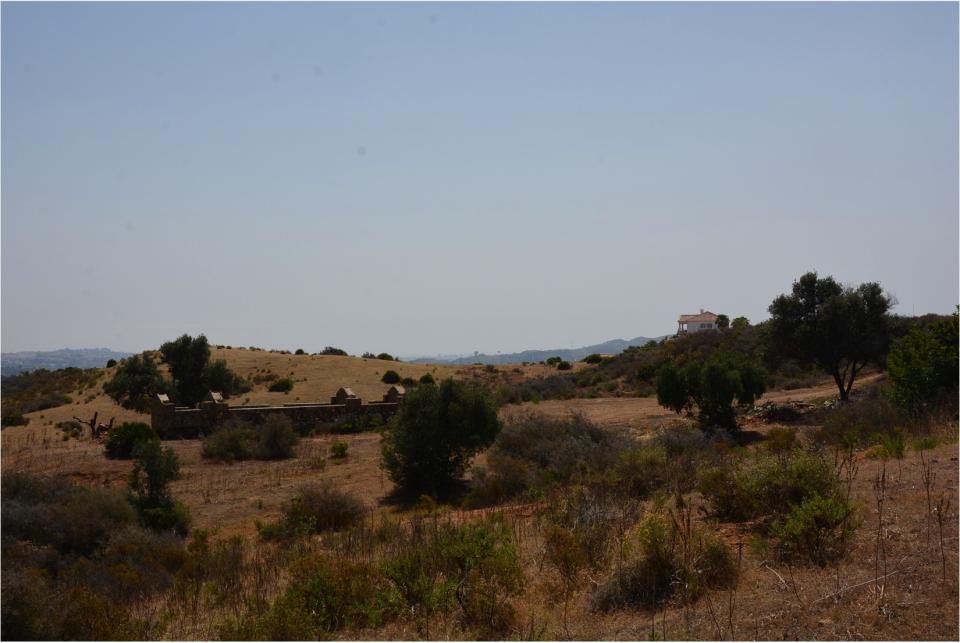
This sounded like a challenge that would be hard to resist for both a winemaker and a scientist. In Mijas, the conditions already reflect what climate change is expected to bring to most traditional winegrowing regions of Europe: extreme weather events and summer temperatures that push grapevines to their physiological limits. Here, we could explore adaptation measures that would soon be needed across Europe. At the same time, the incredible light of the Costa del Sol (the "Sun Coast") promised wines of unparalleled complexity.
To achieve this, ground cover plants, aromatic herbs, shrubs, and shade trees must be present, even in dry conditions. Moreover, vineyards must be designed so that water from extreme rainfalls does not run off but instead infiltrates the soil. The soil’s water-holding capacity must be enhanced through plants, humic substances, and biochar, while water runoff should be prevented or at least significantly reduced using terraces, infiltration trenches, and root barriers—such as those created with Vetiver grass (see below).
We arranged to meet in mid-June (2016) in Andalusia. Rudi Ballauf, the initiator of the project and owner of the hacienda, was already 80 years old but was determined to create something truly unique at the end of his successful career as an entrepreneur—something that would endure and reflect his legacy. He was looking for a purpose that would make it worthwhile to mobilize all his energy once again, to engage deeply, to learn new things, and to bring his broad life experience to bear. He dreaded stillness and had the mental agility to transform that fear into creative drive.
At the time, natural wine was not exactly part of Rudi Ballauf’s vision. He led the Bavarian Commanderie de Bordeaux, enjoyed refined conventional wines, and paid close attention to proper pairings. We initially avoided discussing how the wines should turn out. After all, I wasn’t a partner at that stage—I was just a consultant tasked with planning and establishing the new vineyards.
At the beginning of 2017, all the necessary permits were in place, and we could start with the earthworks. While all the trees and the main morphology of the terrain were preserved, we had to shape the terraces into the slopes in a way that would prevent rainwater from rushing down in torrents and carrying the soil away. Instead, the adapted surface structure would slow and retain the water. We also needed to ensure a minimum level of practicality, so that tasks like cover crop management, potential plant protection, and the application of compost could be as mechanized as possible. At the same time, we wanted to avoid straight lines and geometric patterns, aiming instead for the most organic and natural integration possible. Drainage trenches were then dug into the terraces and filled with lime gravel and biochar, enabling us to retain many cubic meters of water during heavy rains.
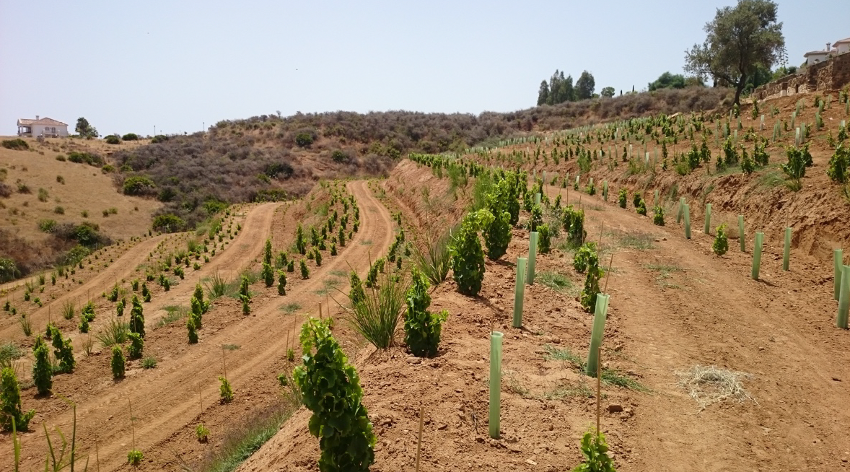
The next step was installing the underground drip irrigation system, buried 20 to 30 cm deep in the soil. Without periodic irrigation, the young plants would not have survived their first summers. Underground drip irrigation significantly reduces the amount of water required. Not only does it prevent evaporation, but it primarily serves as stimulation of the soil water dynamics. By the third year, summer irrigation could already be reduced to two days per week, with sessions lasting just 20 to 30 minutes each. Thanks to the soil’s increased water retention, it is sufficient to keep the root zone slightly moistened to maintain the capillary action of the soil. This makes water from deeper soil layers available to the wine roots. Another crucial advantage is that we can use the drip irrigation system to deliver liquid organic fertilizers, such as compost tea and ferments (e.g., fermented vine leaves), directly to the root zone. This not only stimulates growth but also enhances the resilience of the vines.
A key factor in climate adaptation was planting approximately 6,000 Vetiver plants (among a total of around 18,000 vines) both in the steep sections between the terraces and at critical topographical points within the vineyard rows. Vetiver develops a deep, vertical root network that prevents rainwater from running off the slopes. It also stabilizes the soil, promotes humification, and reinforces the slopes. The water competition with the vines is minimal, as Vetiver improves water infiltration and mobilizes groundwater. In instances where Vetiver is planted directly next to a vine, the roots of the two plants intertwine symbiotically. The Vetiver roots help the vine access deeper soil layers rich in minerals, enhancing its growth and resilience.
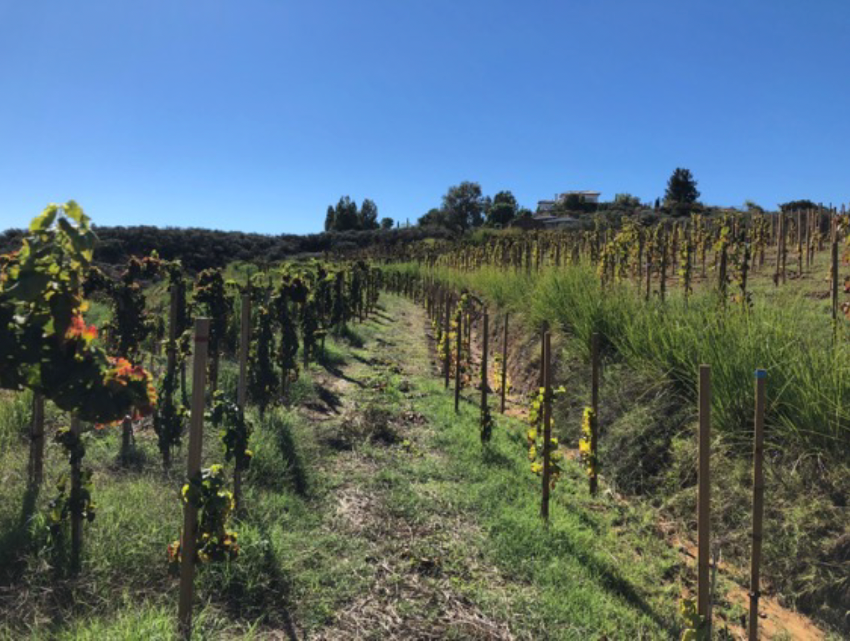
We planted hundreds of olive trees, oranges, persimmons, apricots, lemons, pomegranates, and other climate-adapted trees to provide partial shade, promote thermal air exchange, and enhance biodiversity. Lavender, rosemary, and thyme planted at the ends of the rows attract beneficial insects, while wild roses along the edges provide shelter for wild wasps (Anagrus atomus), natural predators of the green leafhopper (Empoasca vitis), which has proven to be our main challenge. In the evening, bats emerge from the many houses we installed specifically for them.
Even though the ground cover completely dries out in summer, the soil remains lightly protected by dry grass and stabilized by the roots. With the first autumn rain, the sown winter cover crops germinate, and from mid-November until mid-April, the vineyards shine green beneath the deep blue sky. The Mythopia cover crop mixture, developed over the past decade for different climates, includes numerous legumes, such as bean and clover species, which naturally fertilize the vines with nitrogen.
By the end of March 2017, the terraces were ready, and we planted Tintilla di Rota, Syrah, Tempranillo, Garnacha, and Viognier across roughly three hectares. Powered by the intense Andalusian sun and stimulated by fermented grass juices delivered through the drip irrigation system, the young vines thrived so remarkably in their first two years that by August 2018, we decided to harvest the first grapes. Typically, grapes from young vines are discarded and often not brought to full maturity, but the depth of aromaticity we discovered while tasting the ripening grapes made full-bunch fermentation a promising option. When pressing those wines nine months later, I was convinced that we were onto something truly worth all the effort.
We decided to age both the red and white wines in clay amphorae. The cool stone suited the hot wines of Andalusia, whereas in the Valais, with its icy winter cellars, wines fare better in aged oak barrels. The Étangs in southern France are climatically in between, and the decision between barrels or amphorae is still pending there.
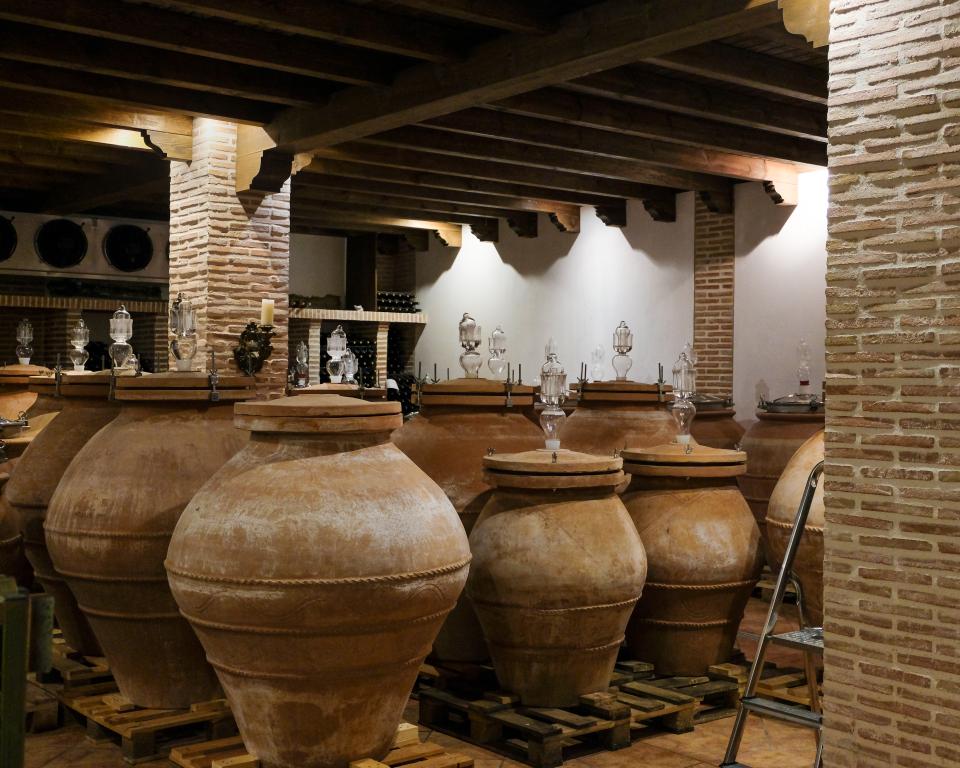
After two exciting years full of motivating activities and travels to the South, the time had come to organize routines. I could no longer be on site as frequently and had to learn to moderate my perfectionism and guide work from a distance. We needed to establish a robust system that encouraged creativity and ease of decision-making at all levels. Perfectionism can sometimes prevent us from seeing how not-so-perfect may even be better, especially when working in a team. When nature is allowed to express itself more freely within an agricultural system, the inevitable mistakes of the farmer become far less consequential.
From the first harvest onward, we were fortunate to bring Simbad Romero on board as our local project manager. Simbad, who also produces his own wines in Ronda (https://simbadromero.com), takes care of the cellar work and wine administration but also coordinates vineyard tasks, monitors plant health, oversees the drip irrigation system, and supervises seasonal workers hired for specific tasks such as replanting, shoot thinning, and cover crop maintenance. The fieldwork and machine maintenance have been handled from the beginning by the versatile Antonio Sevillano. Meanwhile, Rudi Ballauf ensures our peace of mind by managing all matters with the Spanish authorities. He also provides the necessary budget for the project, enabling us to carry out its implementation with fewer compromises than usual start-up winemaking.
For Rudi Ballauf, it was a dream come true. He was curious about everything, diving deeply into sustainable agriculture, soil science, water management, and, of course, viticulture. We made all the key decisions together, guided by his life experience and wisdom. The only challenge for Rudi, however, was our approach to vinification. The wonderful grapes we had brought into the cellar spoke for themselves, but who leaves a southern Spanish wine on its skins for an entire year? And how do you judge, over the course of that year, whether the wine will turn out well—or whether pure confidence might lead to years of work being ruined in the cellar?
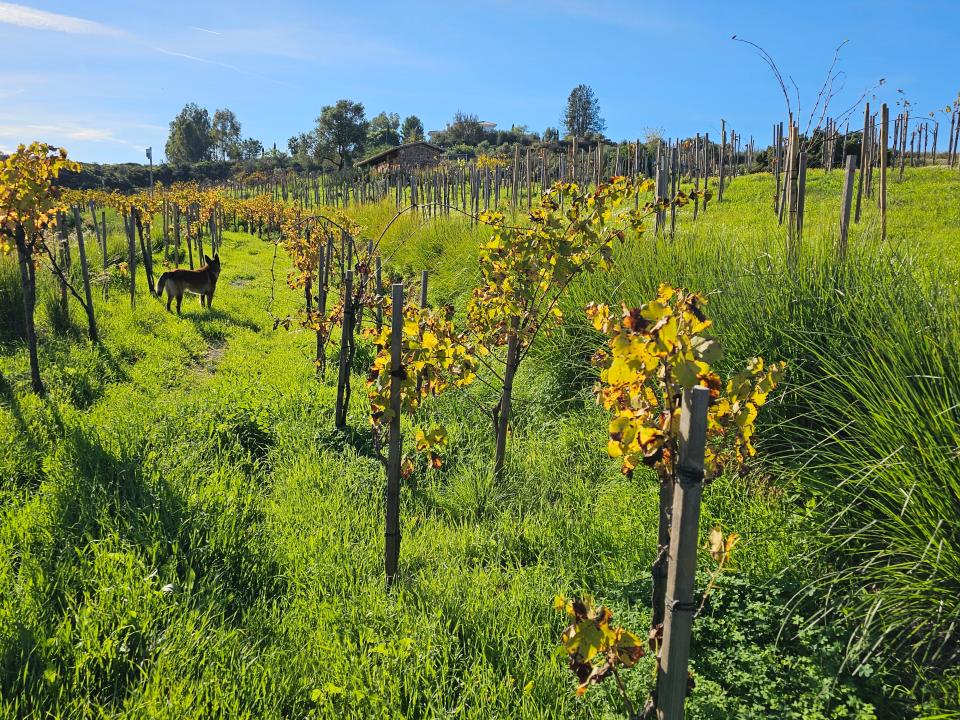
When the first pressing was finally completed, just before the following harvest, one had to be either an expert or a charlatan to interpret the overwhelming tannins, residual sugar, and challenging mouthfeel as clear signs of a great wine. Yet, with each additional year of aging, the wines transformed from the cacophony of a youth choir into the refinement of chamber music. Several sommeliers and Mythopia merchants accompanied us during those years, and their evaluations strengthened our confidence that the Mythopia methods could indeed work in Andalusia.
In autumn 2024, six years after the first harvest and eight years after the start of the project, our first Mythopia Andalusia wines were served in select restaurants and wine bars across Europe. Without the twenty years of experience at Alpine Mythopia, we would not have had the peace of mind to work and invest for so long without tangible signs of market acceptance. And without the growing intergenerational friendship and trust, we might have given up halfway.
The greatest luxuries in today’s world are time and trust—and we took the time to elevate wines in ways no Commandeur de l’Ordre could ever have imagined. The creation of beauty and taste is not an investment but a pure reward.
Hans-Peter Schmidt
Arbaz, 30th December 2024
![[image/logo]](/img/mythopia_logo.jpg) Mythopia
Mythopia